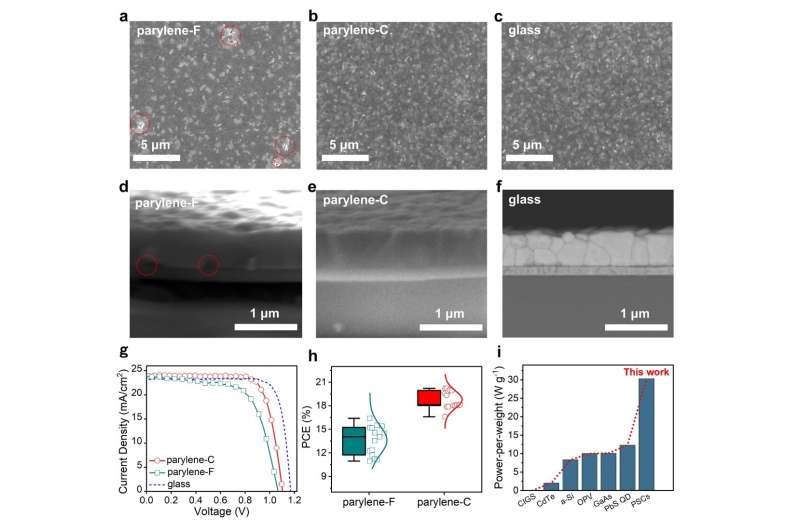Creating ultralight flexible perovskite solar cells

In a recently-published study, 3-µm-thick commercially available parylene-C was deposited on the top of pre-cleaned glass via chemical vapor deposition (CVD) and then the flip-over transferring (FOT) process was employed to ensure a smooth parylene surface. 210-nm-thick Zr, Ti and Ga-doped indium oxide (ITGZO) was sputtered on parylene as transparent conducting oxide (TCO) electrodes, and inverted FPSCs were then accomplished. Devices on glasses and parylene-F (i.e., parylene-VT4) substrates were also constructed to verify the advantages of parylene-C.
This study was published in Science China Materials led by Prof. Rui Zhu, Prof. Wei Wang and Prof. Qihuang Gong from Peking University.
Scanning electron microscopy (SEM) with both top and cross-sectional views was performed to study the morphology difference among perovskite films grown on parylene-F, parylene-C and glass-based substrate. The perovskite films on parylene-F exhibited poor film coverage with several pinholes on the film surface and showed interfacial voids at embedded bottom interfaces which would lead to charge accumulation and induce the loss of device performance. For perovskite films prepared on parylene-C, better film uniformity same as glass-based films was obtained as evidenced by the disappearance of surficial pinholes and interfacial voids.
The ultrathin parylene-C based FPSC achieved a remarkable PCE of 20.2%, which was comparable to that based on FPSCs of common thickness. Due to the high PCE and light device weight of 6.67 g/m2 on parylene-C substrates, an outstanding power-per-weight of 30.3 W/g was realized, indicating the great promise of fabricating efficient, ultrathin and ultralight solar cells with parylene-C films.

More information: Jiang Wu et al, Ultralight flexible perovskite solar cells, Science China Materials (2022). DOI: 10.1007/s40843-022-2075-7


















